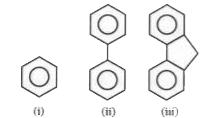Arrange F,Cl,O,N in the decreasing order of electronegativy
O>F>N>Cl
F>N>Cl>O
Cl>F>N>O
F>O>N>Cl
The correct Answer is:D
To arrange the elements F (Fluorine), Cl (Chlorine), O (Oxygen), and N (Nitrogen) in decreasing order of electronegativity, we can follow these steps:
Step 1: Understand Electronegativity
Electronegativity is the ability of an atom to attract shared electrons in a chemical bond. The higher the electronegativity, the stronger the atom's ability to attract electrons.
Step 2: Identify the Elements
The elements given are:
- F (Fluorine)
- Cl (Chlorine)
- O (Oxygen)
- N (Nitrogen)
Step 3: Use the Periodic Trends
Electronegativity generally increases across a period (from left to right) and decreases down a group (from top to bottom) in the periodic table.
- Fluorine (F) is in Group 17 (Halogens) and Period 2.
- Oxygen (O) is in Group 16 and Period 2.
- Nitrogen (N) is in Group 15 and Period 2.
- Chlorine (Cl) is in Group 17 and Period 3.
Step 4: Compare the Electronegativity Values
The commonly accepted electronegativity values (on the Pauling scale) for these elements are:
- Fluorine (F) = 3.98
- Oxygen (O) = 3.44
- Chlorine (Cl) = 3.16
- Nitrogen (N) = 3.04
Step 5: Arrange in Decreasing Order
Now we can arrange these elements based on their electronegativity values from highest to lowest:
1. Fluorine (F) - 3.98
2. Oxygen (O) - 3.44
3. Chlorine (Cl) - 3.16
4. Nitrogen (N) - 3.04
Final Order
Thus, the final order of electronegativity from highest to lowest is:
F > O > Cl > N
Electronegativity is the ability of an atom to attract shared electrons in a chemical bond. The higher the electronegativity, the stronger the atom's ability to attract electrons.
The elements given are:
- F (Fluorine)
- Cl (Chlorine)
- O (Oxygen)
- N (Nitrogen)
Electronegativity generally increases across a period (from left to right) and decreases down a group (from top to bottom) in the periodic table.
- Oxygen (O) is in Group 16 and Period 2.
- Nitrogen (N) is in Group 15 and Period 2.
- Chlorine (Cl) is in Group 17 and Period 3.
The commonly accepted electronegativity values (on the Pauling scale) for these elements are:
- Fluorine (F) = 3.98
- Oxygen (O) = 3.44
- Chlorine (Cl) = 3.16
- Nitrogen (N) = 3.04
Now we can arrange these elements based on their electronegativity values from highest to lowest:
1. Fluorine (F) - 3.98
2. Oxygen (O) - 3.44
3. Chlorine (Cl) - 3.16
4. Nitrogen (N) - 3.04
Thus, the final order of electronegativity from highest to lowest is:
F > O > Cl > N
Topper's Solved these Questions
- PERIODIC PROPERTIES OF ELEMENTSBOOK - VMC MODULES ENGLISHCHAPTER - PERIODIC PROPERTIES OF ELEMENTSEXERCISE - EFFICIENT
50 Videos
- p-BLOCK ELEMENTS-1BOOK - VMC MODULES ENGLISHCHAPTER - p-BLOCK ELEMENTS-1EXERCISE - JEE Advanced Archive
48 Videos
- QUIZBOOK - VMC MODULES ENGLISHCHAPTER - QUIZEXERCISE - CHEMISTRY
30 Videos
Similar Questions
Knowledge Check
Arrange in their decreasing order of rate in SNAr.
 Ai gt ii gt iv gt iii gt vBii gt i gt iii gt v gt ivCv gt iii gt i gt ii gt ivDv gt iii gt ii gt i gt iv
Ai gt ii gt iv gt iii gt vBii gt i gt iii gt v gt ivCv gt iii gt i gt ii gt ivDv gt iii gt ii gt i gt ivArrange in their decreasing order of rate of electrophilic aromatic substitution :
 Ai gt ii gt iiiBiii gt ii gt iCiii gt i gt iiDi gt iii gt ii
Ai gt ii gt iiiBiii gt ii gt iCiii gt i gt iiDi gt iii gt ii
Arrange the following in the decreasing order of their acidity.

View SolutionArrange the following in decreasing order of acidity

View SolutionArrange the following in decreasing order of their reactivity with an electrophile.

View SolutionArrange the following in the decreasing order of their boiling points:
I.
View SolutionArrange the following species in the decreasing order of their bond dissociation energy.
O2,O+2,O−2,O2−2
View SolutionWhich of the following are arranged in the decreasing order of dipole moment ?
View Solution
